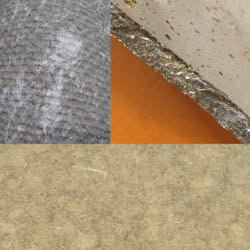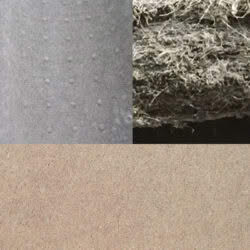How do I know if my corrugated, slate or cladding sheets contain asbestos?
In October 1998, the Royal Decree of 3 February 1998 went into effect in Belgium, banning the supply, stockpiling and sale of materials containing asbestos in Belgium. It can therefore be said with certainty that from 1 October 1998 no corrugated sheets, slates and cladding panels containing asbestos were supplied by SVK.
All materials produced by SVK from then on are asbestos-free. Facade sheets, corrugated sheets and slates are manufactured on the basis of a homogeneous mixture of Portland cement, organic fibres, selected mineral additives and water.
To find out whether or not your fibre cement product contains asbestos, it is best to look for the invoice or a production stamp (on the product itself). If you can find either of these letter combinations "NT" ("Non Asbestos Technology") or "NG" ("New Generation"), you can be sure that your product does not contain asbestos.
As an additional check, the invoice or production stamp can be used to determine the production date.
Is it after October 1998? Then there is no asbestos in your product.
Is it before the start of asbestos-free production? Then there is asbestos in your product anyway.
Start of asbestos-free production for Belgium: | |
Facade panels | 1989 |
Corrugated sheets | 1991 |
Slates | 1988 |
roofing sheets | 1988 |
- Is it from during the transition period between the start of asbestos-free production and October 1998? Then you should look for the indication of "NG" or "NT"
Do you still have doubts after this? Then a check by an accredited lab can be conclusive.

asbestos
Visual determinations:
- Asbestos fibres are visible as white bundles on a fresh fracture surface
- In a flame, the fibres turn brown

asbestos-free
Visual observations:
- Cellulose fibres are white
- Synthetic fibres are translucent
- In a flame, the fibres burn away